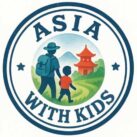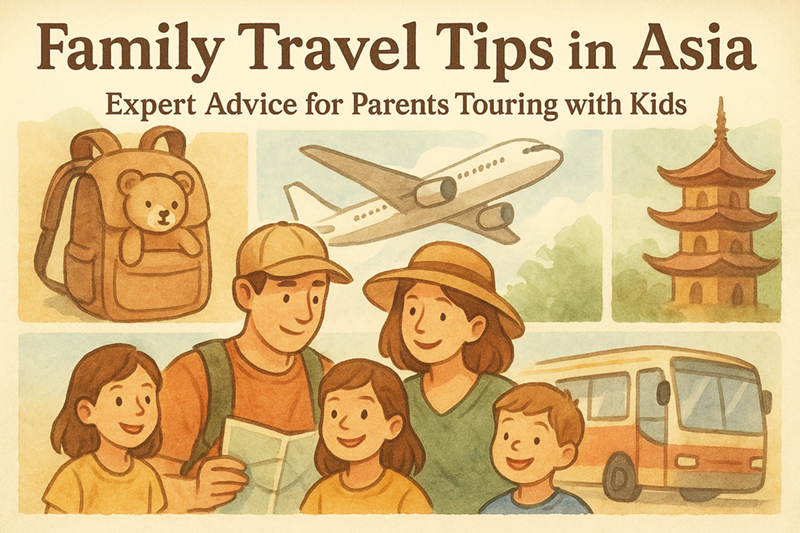Traveling Southeast Asia with Kids: Essential Tips for Staying Healthy & Safe Foods
Traveling through Southeast Asia with young kids is an adventure packed with new sights, sounds, and flavors. After spending several months exploring countries like Thailand, Vietnam, Cambodia, and Vietnam, I’ve learned a lot about keeping my kids healthy and safe, especially around food. Here’s what worked for us and honest tips for other parents planning a similar trip.
Choosing Family-Friendly Accommodations That Support a Healthy Trip
Finding the right place to stay makes a huge difference in keeping everyone safe and comfortable. We stayed at hotels like the Anantara Riverside Bangkok Resort in Bangkok and Sunrise Nha Trang Beach Hotel in Vietnam. These spots offered clean, air-conditioned rooms, reliable hot water, and safe, well-maintained pools for kids to cool off.
Practical Tips for Families with Young Kids (Ages 4–10)
- Look for hotels with easy access to markets and family restaurants. That way, you can quickly grab safe snacks and avoid overly touristy, greasy eateries.
- Prioritize places with good reviews for cleanliness and family-friendly amenities.
- Book accommodations with kitchenette options if your kids are picky eaters or have food allergies. Packing some snacks or baby food can be a lifesaver.
Honest Observations
Many budget guesthouses are charming but often lack proper sanitation or air conditioning, which can make kids uncomfortable. Pro tip: Spend a little extra on a reputable hotel with good reviews; it’s worth the peace of mind.
Navigating Food Markets and Street Food Safely
Southeast Asia is famous for street food, but it can be risky if you’re not careful. We found that visiting busy markets with high turnover, like the Ben Thanh Market in Ho Chi Minh City or Chatuchak Market in Bangkok, was generally safe if you picked vendors with hot, freshly cooked food and lots of locals eating there.
Practical Tips for Safe Eating with Kids
- Stick to cooked foods served hot. Avoid raw vegetables or seafood that’s been sitting out.
- Bring your own water bottles and use bottled water for drinking and brushing teeth. We always carried small bottles of purified water.
- When trying new foods, introduce them gradually. Our kids loved the mango sticky rice in Thailand, but they weren’t fans of the spicy tom yum soup until we tried milder versions.
Honest Observations
It’s tempting to try everything, but sometimes the simplest meals are the safest. Pro tip: Look for vendors with high customer volume and ask locals for recommendations. If a food smells off or looks questionable, skip it.
Best Kid-Friendly Beaches and How to Keep Them Safe
Beach days are a highlight, especially in places like Da Nang, Vietnam, and Phuket, Thailand. The My Khe Beach in Da Nang is our favorite for families—clean, shallow, and well-patrolled. In Phuket, Freedom Beach offers calm waters and soft sand, perfect for kids.
Practical Tips for Beach Safety
- Always supervise kids closely, especially around water.
- Use reef-safe sunscreen generously and frequently, even on cloudy days.
- Pack plenty of water, hats, and lightweight cover-ups to prevent sunburn and heat exhaustion.
- Bring a small first aid kit for cuts or insect bites. We once got a minor cut on the beach, and having antiseptic wipes and bandages saved the day.
Honest Observations
Some beaches are crowded, and local vendors can be aggressive. Pro tip: arrive early in the morning to find quieter spots and establish a meeting point with your kids. Always set clear boundaries about staying within sight.
Dealing with Tropical Allergens and Insects
Tropical Southeast Asia is beautiful but can be tricky health-wise for kids. Mosquitoes are common, especially in the evenings, and some foods may trigger allergies.
Practical Tips for Staying Safe
- Use child-safe insect repellents with DEET, and dress kids in long sleeves and pants after sunset.
- Keep windows and doors screened at your hotel.
- Be aware of local allergens—if your child has allergies, carry antihistamines and check ingredient lists on packaged foods.
- We noticed that some fruits like rambutan and lychee can cause stomach upset if not ripe or washed properly.
Honest Observations
Mosquito nets and repellents made a huge difference. Pro tip: schedule outdoor activities before sunset to avoid peak mosquito hours, and always carry a small bottle of bug spray.
Managing Food Hygiene and Avoiding Common Illnesses
Diarrhea is a common concern in tropical regions, but with a few precautions, it’s manageable.
Practical Tips for Prevention
- Encourage kids to wash hands frequently, especially before eating. We carried portable hand sanitizer and wipes everywhere.
- Avoid ice in drinks unless you are sure it’s made from purified water.
- Use bottled or boiled water for drinking and brushing teeth.
Honest Observations
Despite precautions, some kids still got minor tummy upsets. We found that sticking to familiar, cooked foods minimized issues. Pro tip: Restock your supply of oral rehydration salts, and keep your kids hydrated at all times.
Final Thoughts
Traveling Southeast Asia with young children is incredibly rewarding if you stay prepared. Focus on safe, fresh foods, proper hydration, and frequent handwashing. Choose accommodations wisely—clean and family-friendly places make a huge difference. Keep a close eye on your kids around water and insects, and don’t be afraid to say no to questionable street foods.
Every trip taught us something new, but the key is to stay flexible, vigilant, and prepared. With these tips, your family can enjoy this vibrant region safely and happily.

